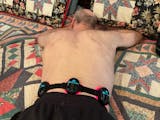The Impact of Low-Intensity Laser Therapy on Muscle Performance in Spastic Hemiparetic Patients
Cerebrovascular accidents (CVAs), also known as strokes, can have a significant impact on individuals, often causing issues with limb function and affecting sensory, language, and motor skills. The search for effective treatments to minimize the effects of strokes has resulted in notable progress in different therapeutic methods. Among these, low-intensity laser therapy (LILT) stands out as a promising approach that has demonstrated considerable potential in improving muscle function and decreasing muscle fatigue in patients with spastic hemiparesis.
Understanding Spastic Hemiparesis Post-CVA
Spastic hemiparesis, a prevalent condition that occurs after a stroke, is characterized by muscle stiffness and weakness on one side of the body. This condition presents significant obstacles to the patient's mobility and overall well-being. Conventional rehabilitation approaches often prove inadequate in delivering holistic relief, underscoring the importance of investigating alternative therapies.
Low-Intensity Laser Therapy: A Breakthrough in Rehabilitation
Low-level laser therapy (LLLT), commonly referred to as red light therapy, utilizes low-power lasers to stimulate cellular activity and facilitate the healing process in specific areas. When it comes to muscle performance, LLLT has been proven to greatly improve muscle function and alleviate fatigue.
Clinical Evidence Supporting LILT
A double-blind clinical trial methodology was utilized in a study involving 15 post-CVA volunteers with spasticity, ranging in age from 40 to 80 and consisting of both genders. The objective of the study was to evaluate the immediate effects of LILT on muscle performance. The trial consisted of three consecutive stages: control, placebo, and laser application. The primary focus of the study was to assess the impact of LILT on isometric contraction tests conducted on the patients' hemiparetic side.
Key Findings: Increased Muscle Performance and Reduced Fatigue
The study findings were convincing. Notable enhancements in muscle performance were noted following LILT treatment, showing a substantial rise in peak torque (p = 0.0043). Furthermore, a significant decrease in blood lactate concentration (p < 0.0001) was observed, suggesting reduced muscle fatigue. These results highlight the promising role of LILT in improving motor function and endurance in spastic hemiparetic patients.
Mechanisms of Action
LILT operates by stimulating the activity of mitochondria in cells, resulting in a rise in ATP production. This surge in cellular energy fosters improved muscle contraction and recovery, effectively diminishing fatigue. Additionally, LILT improves blood circulation, aiding in the elimination of metabolic waste products such as lactate, which accumulate during muscle exertion.
Prungo's Role in Advancing Portable Red Light Therapy
Prungo is committed to utilizing portable red light therapy devices to offer accessible and efficient treatments for individuals experiencing conditions such as spastic hemiparesis. Our devices are specifically engineered to administer accurate doses of red light therapy, guaranteeing the best therapeutic results. Through the integration of cutting-edge technology and user-friendly designs, Prungo's portable devices provide a convenient option for home-based rehabilitation, empowering patients to actively manage their recovery process.
Practical Applications and Future Directions
LILT has a wide range of practical uses in stroke rehabilitation. Integrating portable red light therapy devices into patients' daily schedules can offer a reliable form of therapy alongside conventional rehabilitation exercises. Ongoing research suggests that LILT may also have the potential to assist in the recovery of various other neuromuscular conditions.
Conclusion
The treatment of spastic hemiparesis post-CVA has been revolutionized by the introduction of low-intensity laser therapy. Supported by clinical evidence, this therapy has proven to be effective in improving muscle performance and reducing fatigue. By offering a non-invasive and drug-free alternative to traditional rehabilitation methods, LILT has become a game-changer. At Prungo, we are dedicated to providing our customers with innovative and portable red light therapy devices that significantly improve the quality of life for stroke survivors. As a reliable partner in health and wellness, Prungo is here to support those interested in exploring the potential of red light therapy.
















Share:
Optimizing Recovery: The Role of Laser Therapy in Post-Stroke Rehabilitation
Exploring the Impact of Phototherapy on Exercise-Induced Muscle Damage and Recovery